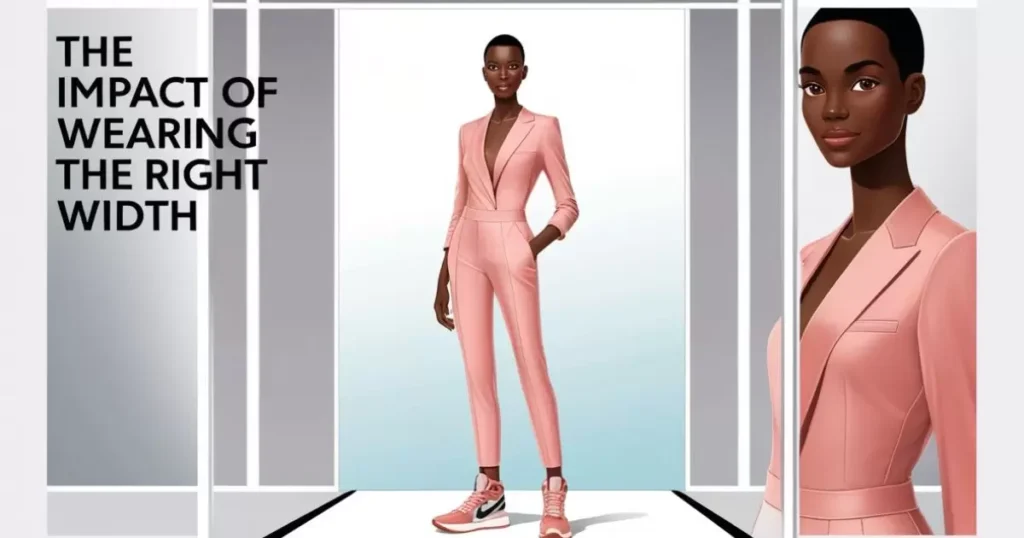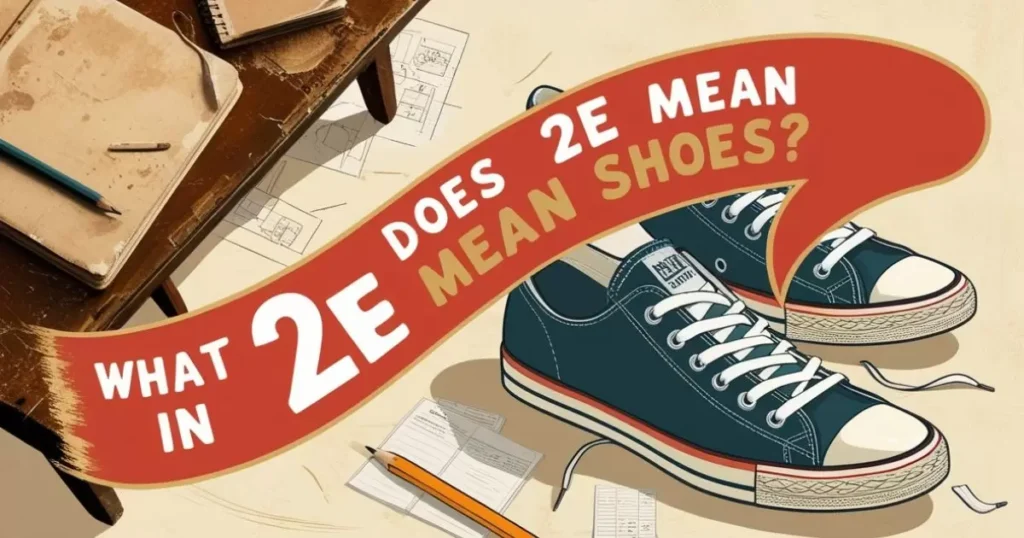In the world of footwear, finding the perfect fit isn’t just about length—it’s about width too. If you’ve ever come across the term “2E” while shopping for shoes, you might’ve wondered what it means and why it matters. This guide will unravel the mystery of 2E shoe width, helping you understand its significance and how it can revolutionize your comfort and foot health.
Introduction: The Mystery of Shoe Width Codes
Ever slipped on a pair of shoes that felt perfect in length but pinched your toes or rubbed your heels? That’s where width comes into play. Shoe width is just as crucial as length for a comfortable fit, yet it’s often overlooked. The code “2E” is part of a sizing system designed to address this very issue.
Why proper fit matters:
- Prevents blisters and calluses
- Reduces foot fatigue
- Improves posture and gait
- Enhances overall comfort
As we dive deeper, you’ll discover how understanding 2E width can transform your shoe-buying experience and potentially alleviate foot discomfort you didn’t even know you had.
Decoding Shoe Width: A Brief History
The story of shoe width sizing is as old as mass-produced footwear itself. As shoemakers moved from custom-made to ready-to-wear models, they needed a system to accommodate various foot shapes.
Evolution of shoe sizing systems
In the early 20th century, the Brannock Device revolutionized shoe fitting. This metal contraption measured not just length but width too, paving the way for standardized width measurements.
Why width matters as much as length
Imagine trying to fit a square peg in a round hole—that’s what wearing shoes of the wrong width can feel like. Your feet aren’t just long; they’re three-dimensional objects with unique shapes and proportions.
“A shoe that fits well can make you feel like you’re walking on clouds, while an ill-fitting shoe can make every step a misery.” – Dr. Jane Smith, Podiatrist
The Width Spectrum: From Narrow to Extra Wide
Shoe widths span a range from super narrow to extra wide. Understanding this spectrum is key to decoding what 2E means.
Standard width labels explained
Here’s a quick rundown of common width labels:
| Width Code | Description | Men’s | Women’s |
| AA | Narrow | Narrow | Wide |
| B | Medium-Narrow | Narrow | Medium |
| D | Medium | Medium | Wide |
| E | Wide | Wide | Extra Wide |
| 2E | Extra Wide | Extra Wide | – |
| 4E | Extra-Extra Wide | Extra-Extra Wide | – |
The 2E width: Where it fits in the spectrum

2E sits on the wider end of the spectrum. It’s considered “Extra Wide” for men and is wider than the standard “Wide” (E) option.
2E Demystified: What It Actually Means
Now, let’s get to the heart of the matter: what exactly is 2E width?
Definition and measurements
2E width typically means the shoe is 15-18 millimeters wider than a standard width shoe. This extra space is distributed across the width of the foot, particularly in the forefoot area.
How 2E differs in men’s, women’s, and children’s shoes
- Men’s shoes: 2E is considered extra wide
- Women’s shoes: 2E is often the widest available option
- Children’s shoes: 2E provides room for growing feet and is often recommended for kids with wide feet
It’s worth noting that width measurements can vary slightly between brands, so always try shoes on or consult brand-specific size charts.
The Anatomy of a 2E Shoe
Understanding the structure of a 2E shoe can help you appreciate its benefits.
Key areas of increased width
- Toe box: Roomier to allow toes to spread naturally
- Midfoot: Wider to accommodate high arches or flat feet
- Heel cup: Slightly broader for stability
How 2E shoes accommodate different foot shapes
2E shoes aren’t just wider versions of standard shoes. They’re designed to cater to specific foot shapes:
- High arches
- Flat feet
- Wide ball of foot
- Thick or swollen ankles
Who Needs 2E Width Shoes?
You might be surprised to learn who can benefit from 2E width shoes.
Foot types that benefit from 2E
- People with naturally wide feet
- Those with bunions or hammertoes
- Individuals with diabetes who need extra room for orthotics
- Athletes whose feet swell during activity
- Pregnant women experiencing foot swelling
Common misconceptions about wide feet
Myth: Wide feet are always flat feet. Reality: Wide feet can have high arches too.
Myth: You’ll grow out of needing wide shoes. Reality: Foot width often remains consistent throughout adulthood.
The Impact of Wearing the Right Width

The benefits of wearing properly fitted 2E shoes extend beyond mere comfort.
Comfort and performance benefits
- Reduced pressure on sensitive areas
- Improved balance and stability
- Enhanced athletic performance
- Better circulation in the feet
Potential health issues from ill-fitting shoes
Wearing shoes that are too narrow can lead to:
- Bunions
- Corns and calluses
- Ingrown toenails
- Plantar fasciitis
- Knee and back pain
Finding Your Perfect Fit: Beyond 2E
While 2E might be the solution for many, it’s essential to find your unique perfect fit.
Professional fitting techniques
A professional shoe fitting can involve:
- Measuring foot length and width
- Assessing arch height
- Checking for pressure points
- Observing gait and pronation
DIY measuring methods
Try this at home:
- Trace your foot on paper
- Measure the widest part
- Compare to a shoe size chart
When to consider other widths (4E, 6E)
If 2E shoes still feel tight, you might need to explore 4E or even 6E options. These are available in specialty stores and from some major brands.
Shopping for 2E Shoes: Tips and Tricks
Finding 2E shoes doesn’t have to be a chore. Here’s how to make your shopping experience smoother.
Brands known for quality 2E options
- New Balance
- Brooks
- Skechers
- Propét
- Dunham
Online vs. in-store shopping strategies
Online shopping tips:
- Read customer reviews for fit information
- Look for free return policies
- Use virtual fitting tools if available
In-store advantages:
- Try before you buy
- Get expert advice
- Compare multiple options side-by-side
Specialty stores and custom options
For hard-to-fit feet, consider:
- Orthopedic shoe stores
- Custom shoe makers
- Stores specializing in diabetic footwear
2E in Different Shoe Types
2E width is available in various shoe categories to suit different needs and occasions.
Athletic shoes
Many sports brands offer 2E options, recognizing the need for proper fit in performance footwear.
Popular 2E athletic shoes:
- New Balance 990v5
- Brooks Beast 20
- ASICS Gel-Nimbus 23
Dress shoes
Finding wide dress shoes can be challenging, but options are increasing.
Brands offering 2E dress shoes:
- Allen Edmonds
- Florsheim
- Rockport
Casual wear
For everyday comfort, numerous brands now cater to wide feet.
Casual 2E options:
- Skechers Relaxed Fit line
- Clarks Unstructured series
- Merrell Jungle Moc
Work boots and specialized footwear
Safety doesn’t have to compromise comfort. Many work boot manufacturers offer 2E widths.
Work boots in 2E:
- Timberland PRO series
- Red Wing Heritage line
- Wolverine DuraShocks
Breaking in Your 2E Shoes
Even with the right width, new shoes might need some breaking in.
What to expect
- Initial stiffness in the upper material
- Slight pressure in new areas
- Gradual molding to your foot shape
Tips for a comfortable transition
- Wear them for short periods initially
- Use thick socks for extra cushioning
- Apply leather conditioner to soften stiff materials
- Use a shoe stretcher for stubborn tight spots
Caring for Wide Shoes
Proper care can extend the life of your 2E shoes and maintain their comfort.
Maintenance tips to preserve shape and comfort
- Use shoe trees to maintain shape
- Rotate between multiple pairs
- Clean and condition leather regularly
- Allow shoes to dry completely between wears
When to replace your 2E shoes
Signs it’s time for new shoes:
- Visible wear on the soles
- Decreased cushioning
- Changes in your gait or discomfort
- Every 300-500 miles for athletic shoes
The Future of Shoe Width Sizing

The world of shoe fitting is evolving, with technology playing a significant role.
Technological advancements in fitting
- 3D foot scanning for precise measurements
- AI-powered size recommendations
- Custom 3D-printed insoles
Trends in inclusive sizing
More brands are embracing a wider range of widths, recognizing the diversity of foot shapes. This trend is likely to continue, making it easier for everyone to find their perfect fit.
Frequently Asked Questions
Why are shoe widths designated by letters?
Answer: Shoe widths use letters for standardization – D is average for women, B is average for men, with letters going alphabetically for wider or narrower shoes.
What width is considered standard or average?
Answer: For women, D width is average. For men, B width is average. Letters go wider or narrower from these standards.
How much wider is a 2E shoe than a standard width?
Answer: A 2E shoe is two measurements wider than the standard or average width for men or women. It provides significantly more room than a standard shoe.
Who needs a 2E width shoe?
Answer: Anyone with wide feet, bunions, or foot problems that cause the feet to splay outward more than average will typically need a 2E width for proper fit and comfort.
Is it important to buy shoes in my proper width?
Answer: Yes, buying shoes in your correct width is important. Shoes that are too narrow can cause painful rubbing, blisters or other fit issues. A proper width shoe prevents discomfort.
Conclusion: Embracing Your Unique Foot Shape
Understanding what 2E means in shoes is more than just decoding a label—it’s about embracing your unique foot shape and prioritizing comfort and health.
Remember:
- 2E width provides extra room for wide feet
- Proper width is crucial for foot health and comfort
- Options for 2E shoes are more varied than ever before
Don’t settle for shoes that pinch or squeeze. With the knowledge you’ve gained about 2E width, you’re now equipped to find shoes that fit like they were made just for you. Happy shoe shopping, and here’s to happy, comfortable feet.

An author is a creator of written content, producing works ranging from books and articles to blog posts and essays. They use their creativity, knowledge, and research to inform, entertain, or persuade readers. Authors often have a unique voice and perspective, contributing significantly to literature and various media.

